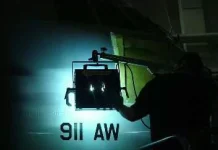Automotive Regulatory Update
By Rita Loof, director of regional environmental affairs
RadTech North America
The need to reduce Volatile Organic Compounds (VOCs) and Hazardous Air Pollutants (HAPs) has caused the automotive coatings industry to turn to environmentally friendly technologies1 such as ultraviolet/electron beam (UV/EB) as alternatives to conventional solvent systems. The RadTech Association has successfully made a persuasive case to the South Coast Air Quality Management District (SCAQMD) that the use of UV/EB technology should be encouraged by reducing unnecessary regulatory burdens for end users. The association has negotiated exemptions from permitting, recordkeeping and rule applicability in an effort to remove potential regulatory burdens to the conversion to UV/EB technology. UV/EB technology can be a solution to the myriad of regulations impacting the automotive coating industry.
South Coast Air Quality Management District (AQMD) Rule 1147: The heater conundrum
South Coast Air Quality Management District (AQMD) Rule 1147 (Nitrogen Oxides Reduction from Miscellaneous Sources) applies to small and medium-size combustion equipment using gaseous or liquid fuels that require an AQMD permit. This includes ovens, dryers, dehydrators, heaters, kilns, calciners, furnaces, crematories, incinerators, heated pots, cookers, roasters, fryers, closed and open heated tanks and evaporators, distillation units, afterburners, degassing units, vapor incinerators, catalytic or thermal oxidizers, absorption chillers, and soil and water remediation units. Rule 1147 does not apply to combustion equipment operated at some of the major source facilities (RECLAIM sources) and to boilers, steam generators, process heaters and water heaters subject to AQMD Rules 1146, 1146.1 or 1146.2. Some of the requirements of the rule took effect on July 1, 2012. Units emitting less than 1 pound per day were given until 2017 to comply. The district reports that a technology assessment in progress includes the review of 2,700 permits.
Rule 1147 was especially controversial with the collision repair industry. UV technology was first introduced as a solution for headlight refinishing operations in 20052. According to the association representing auto body shops, their members switched to waterborne products to comply with SCAQMD regulations. Waterborne products required the installation of heaters to drive off the water. Rule 1147 requires that the NOx emissions from heaters be reduced. Since NOx and CO emissions are inversely proportionate, a decrease in NOx emissions causes an increase in CO emissions, thereby causing the auto body shops to be out of compliance with the CO limits.
During the rules public hearing, dozens of business owners testified that the rule would have a devastating impact on the auto body industry. One of the commenters stated that the various configurations of equipment (now required by the rule) cost between $75,000 to $180,000, with the median price running around $100,000. Another auto body business, with nine locations and more than 200 employees, reported the estimated cost to retrofit their booths would be over half a million dollars and would result in the closure of his business and the loss of jobs. Industry representatives pointed out that, in many cases, the emissions from the equipment were less than one pound per day and that the rules recordkeeping requirements placed an additional administrative burden on business to report their emissions.
Technological deficiencies with the low NOx burners also were reported. A business representative testified that advances in the technology of paints could make heaters obsolete in the coming years, and the costs to comply with this rule now will be wasted when heaters are no longer needed. SCAQMD staff is now proposing to delay the requirement to replace burners for existing in-use spray booths until the heating system is modified or the unit is replaced. Some businesses are paying thousands of dollars in fines per month as a result of noncompliance with Rule 1147. Thus, delays are also being considered for burner replacement of in-use units emitting less than one pound per day of NOx unless the combustion system is modified or the unit is replaced. In some cases, companies must provide source test data, which can come at a considerable expense. UV/EB processes that do not employ heaters do not have an issue and, therefore, may have an advantage.
UV/EB – a solution
Automotive coating operations are regulated at the federal, state and local level. With a stringent regulatory climate involving various layers of regulations (i.e. SCAQMD Rule 1147), UV/EB technology may offer end users operational flexibility. Environmentally friendly UV/EB materials can be the answer to complex regulatory problems and help end users stay in compliance and in business.
A deeper look at automotive regulations and updates on those affecting the UV/EB industry can be found at www.uvebtech.com. Rita Loof is the director of regional environmental affairs for RadTech North America.
1.) M.J. Dvorchak, 1K UV-A Automotive Refinish; Clear Coats and Primers, (2014)
2.) M.J. Dvorchak, 1K UV-A Hard Coats for Polycarbonate Head Light Refinishing, (2014)




